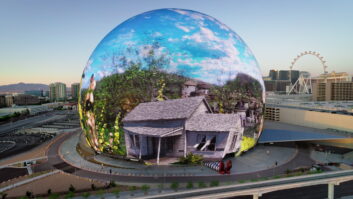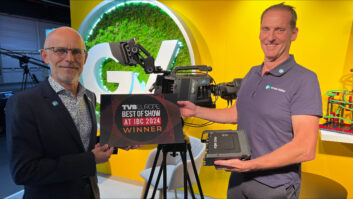For his work on the second season of Disney+ series Andor, cinematographer Mark Patten supported the show’s sense of naturalism by using the Cine Reflect Lighting System (CRLS) from Lightbridge.
Patten chose Lightbridge’s Precision Reflectors to create spill-free, naturalistic lighting both across massive set builds and dense outdoor environments for the show, which is set within the Star Wars universe.

Season two of the show adopted a four-chapter structure, with Patten working on the third chapter, episodes 7-9
“From the very top, showrunner Tony Gilroy’s vision was about achieving naturalism in every frame,” Patten explained. “Even though it’s a sci-fi world, Andor is grounded. That meant never feeling over-lit. The CRLS system was a great tool to both achieve this and allow me to nuance my chapter.
“Luke Hull, our production designer, had built this massive, life-size plaza on the Pinewood Studios backlot where the Ghorman massacre takes place,” he continued. “To properly light it, I needed to get illumination into spaces where the sun wouldn’t actually reach.”
Patten positioned C-100 Precision Reflectors to catch and bounce light from large HMIs, including ARRI M90s and M40s into the nooks and crannies off the large central plaza.

“By utilising the light physics of CRLS, I can reflect natural-looking light into these huge sets,” he continued.
“The best thing about Precision Reflectors is that you can light overall from a distance yet still model and sculpt the scene. With CRLS, you’re not putting all this gear in the actors’ eyelines. It frees the set up.”.
The forest sequence in episode 9, when Diego Luna’s Cassian Andor hides out in a treehouse-like jungle safehouse was shot in a real forest near London. “The greens team had to blend the northern hemisphere forest and make it look like something in the tropics, so the foliage became super dense. Getting light in there was difficult,” said Patten.

To meet the challenge, he opted to use parabolic Dedolight DPB70s fired into Precision Reflectors, creating narrow shafts of ultra hard light, bounced and diffused to mimic sunlight streaking through the dense foliage. “It worked a treat—you suddenly had these beautiful hard streaks cutting through jungle canopy and into the interior of the set, and it still felt natural.”
“I think the CRLS system helps you become more confident in how light really works,” Patten said. “It takes a leap of faith at first, but once you understand the system, it completely shifts the way you think about lighting. It lets you light naturally, simply—and with a level of precision that’s hard to beat.”







